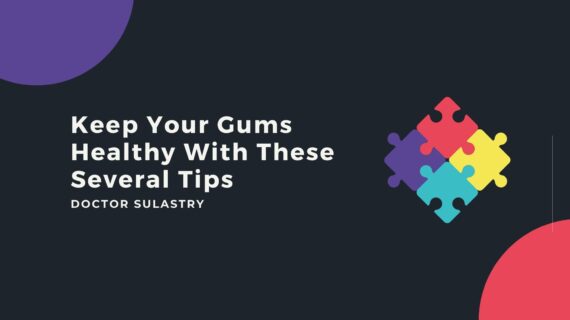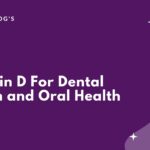Keep Your Gums Healthy – Gum disease begins when plaque builds up below and is visible along the gum line. Plaque is a sticky coating-like substance that contains bacteria and germs. This can lead to infections that injure the gums and bones, leading to gum disease and tooth decay. Plaque can also cause gingivitis, the earliest stage of gum disease.
When it comes to your oral health, it’s not all about how straight your teeth are or how bright your smile is. You can’t forget your gums. Even though you’re cavity-free and have the most pearly chompers in town, that doesn’t mean you’re immune to gum disease. Because they are usually painless, most people don’t know that something is wrong with their gums.
If you want to know how to keep your gums healthy, you need to know all about gums first which is explained in this articles.
Also Read Teeth Scaling for Health
What is Gum Disease?
Gum disease is a disease that can be caused by bacteria found in plaque or tartar. Plaque is a sticky layer that forms on teeth. Plaque is mostly made up of bacteria, mucus, food, or other dirty particles. When plaque is not removed properly, it can harden into tartar, which is home to thousands of bacteria. Bacteria in plaque and tartar cause inflammation of the gums, which is called gingivitis. This can only be eliminated by a dental hygienist or dentist.
In the world of health, this gum disease has 3 stages, namely as follows:
- Gingivitis
This is the initial stage and there are usually tender, red, swollen gums that can bleed easily. If caught early, this condition can often be resolved by brushing and cleaning the teeth properly.
- Mild to moderate periodontitis
The next stage is increased inflammation and bleeding around the tooth area. It occurs when bacterial toxins in plaque and your body’s defenses begin to destroy the gums that stick to your teeth. This causes the gums to slip away from the teeth and form pockets of material that are infected by bacteria. Premature bone loss around the teeth may be very obvious. Proper care at this stage is very important in order to prevent more bone loss and loosening of the cavities of the teeth.
- Advanced periodontitis
At this stage the gum pockets deepen and there is severe damage to the bone that holds the tooth in its original place. During this stage, the tooth may become so loose that it will need to be removed if periodontal treatment does not heal properly.
According to the American Dental Association (ADA), signs that you might have gum disease include:
- consistently bad taste or breath
- separating or loose permanent teeth
- gums that easily bleed, that are swollen, red, or tender
- and gums that have pulled away from your teeth
Tips to Keep Your Gums Healthy
1. Get a Dental Floss
Flossing helps to remove plaque and food particles that are stuck between your teeth and under your gums. To floss correctly:
- Cut off about 18 inches of floss and hold it tightly between your thumbs and forefingers. Place it between your teeth and gently slide it up and down.
- When the floss reaches the gum line, curve it around 1 tooth. Gently rub the side of the tooth, moving the floss with up-and-down motions, making sure to go below the gums line. Repeat this method on the rest of your teeth. Remember to floss the back side of your back teeth.
2. Brush Your Teeth at Least Twice a Day
You are obliged to brush your teeth after eating. This helps remove food and plaque that gets stuck between your teeth and gums. Scrub your tongue too if necessary, as it can harbor bacteria if not cleaned. Your toothbrush should have soft, comfortable bristles in your mouth, and don’t use harsh ones as this can injure your gums.
Consider a battery-powered or electric toothbrush as manual ones are preferable. This can help reduce gingivitis and plaque more than manual brushing. replace your toothbrush or toothbrush head every three to four months, or sooner if the bristles on the toothbrush have started to break down.
3. Stop Smoking
Smoking is closely related to the onset of gum disease and others. Because smoking weakens your immune system, smoking also makes it more difficult to fight gum infections when it is exposed to bacteria on your gums. In addition, smoking makes it more difficult for your gums to heal after they have been damaged and also frequent smoking can make your teeth turn yellow.
4. Perform Regular Dental Cleaning
It is highly recommended if you have inflammation of your teeth and gums to see a doctor. Your dentist can detect symptoms of gum disease earlier if you see him regularly. That way, symptoms can be treated before they become more severe or serious. The cleaning method recommended by the dentist is the only way to remove tartar. It can also remove plaque that you missed when brushing or flossing your teeth. If you have gingivitis, brushing, flossing, and cleaning your teeth regularly can help to slowly open your gums and teeth.
5. It is Recommended to Use Fluoride Toothpaste
Typically for toothpaste, store shelves are lined with brands that claim to reduce gingivitis, freshen breath, and whiten teeth instantly. But which one can really help you to prevent tooth and gum disease? Make sure you choose a toothpaste that contains fluoride and has an ADA acceptance seal. After that, you can choose which variant.
That’s all about tips how to keep your gums healthy. I hope this article can help you maintain and care for the health of your teeth and gums. It is important for you to always take care of your teeth and gums to be more confident and look amazing smile.
References :


